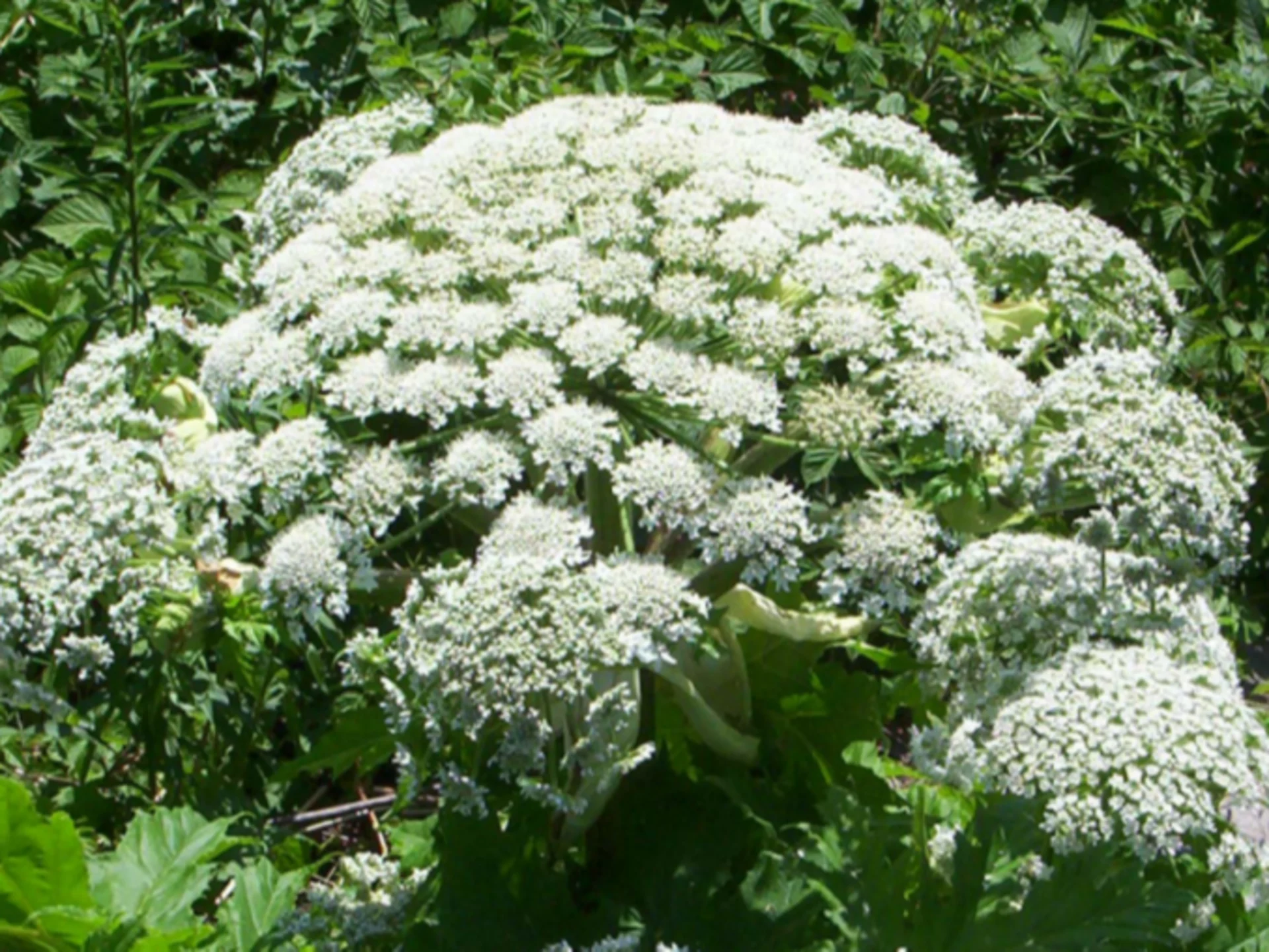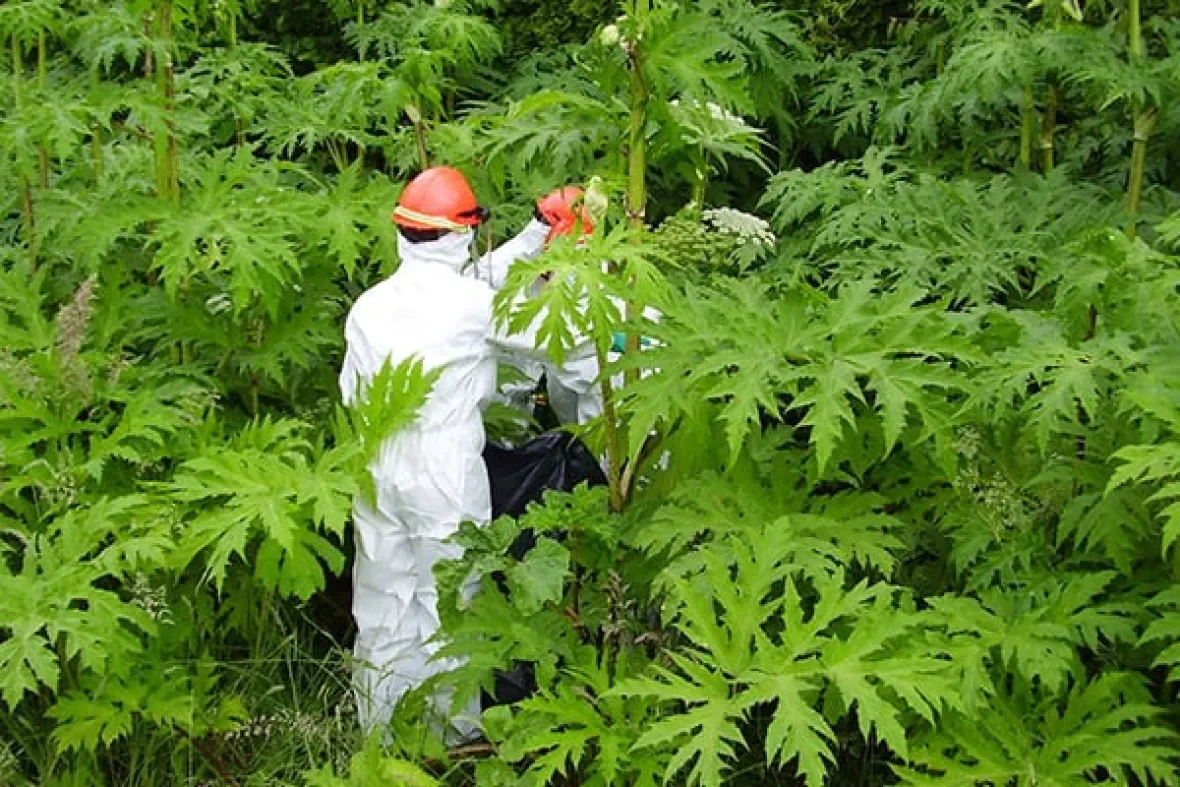
B.C. man warns against giant hogweed after exposure, temporary sight loss
With spring right around the corner, a B.C. man is warning others about giant hogweed, a highly toxic plant that left him with temporary vision loss — and covered in massive, burning blisters.
Giant hogweed is an invasive, noxious weed and in B.C., found mostly in parts of the South Coast and Vancouver Island.
SEE ALSO: Avoid at all costs: What makes giant hogweed so dangerous
"This is a hellish plant. It is as hellish as they come," said Don Pollack, who came into contact with hogweed in May 2021.
Pollack 49, says he was cycling through the Burnaby greenbelt area when he passed through a "plume of pollen" from an overgrowth of the weed hanging over the trail.
"By the time I got to southwest Marine Drive I was completely snow blind. I could not see," he said. "It was white, piercing light."
Giant hogweed grows three to four metres in height and thrives near streams, creeks and ditches and when in bloom, carries numerous small, white flowers that form an umbrella shape.

Giant hogweed grows three to four metres in height, and its sap causes severe blistering, large welts and burns, and in extreme cases, temporary vision loss. (Invasive Species Council of BC)
It is an undesirable invader due to its large size, prolific seed production and vigorous growth, according to the Invasive Species Council of B.C.
The highly toxic sap is contained within the leaves and stems and can cause hypersensitivity to sunlight, that results in burns, blisters, scarring and in extreme situations, temporary vision loss.
Pollack said he spent an anxious 45 to 60 minutes sitting on a curb until his vision gradually recovered enough for him to make the four-kilometre walk home with his bike.
"By evening I could see blisters starting to form on the sides of my abdomen," he said, adding that the toonie-sized sacs quickly made their way onto his head, neck and ankles.
"One had popped, and I absolutely noticed it because it soaked my sock, that's how big the blisters were," he said.
Visit our Complete Guide to Spring 2023 for an in-depth look at the Spring Forecast, tips to plan for it and much more!
4 months for symptoms to subside
Pollack says he visited several medical clinics and an allergist — and while he was prescribed antibiotics and antihistamines, the doctors he visited couldn't diagnose the problem. It eventually took more than four months for his symptoms to subside.
The answer came last January, when he inadvertently came across a YouTube clip of crews removing hogweed from a field.
"They were removing what I had rode through on my bike. They were in hazmat suits and safety vehicles that they were vacuuming up these trees. And I'm thinking, 'I rode directly through that.'"

Proper personal protective equipment is recommended when handling hogweed. (Fraser Valley Regional District)
Gail Wallin, executive director of the Invasive Species Council of B.C., says calls to her office increase in spring after people have come into contact with the plant, and are unsure what caused the blistering and other rare symptoms, like temporary vision loss.
"You may not know it right away, people don't make the connection," Wallin said. "You may have had sap on you from two days ago — and you go outside and all at once your skin starts to burn."
She says gardening enthusiasts and landscapers are responsible in part for the proliferation of the weed, because of its ornamental value.
"It's large, it's impressive. But in areas where it grows, it takes over the entire habitat and nothing else can grow underneath it," Wallin said.
The council asks gardeners not to buy, trade or grow giant hogweed or its seeds and urges extreme caution with its removal.
WATCH: How to spot these toxic plants before you get too close
"Either hire a professional, or carefully follow the instructions on our website," said Wallin.
To dispose of hogweed, the Invasive Species Council says:
Wear proper protective gear from head to toe.
Bag or tarp manually removed plants, plant parts and seeds before transporting to a designated disposal site, like a landfill or transfer station.
Wash vehicles, including tires and undercarriage, and equipment at designated cleaning sites before leaving infested areas.
"Make sure you do not get it into a bin for composting. You want to make sure it goes into the landfill or whatever your local government uses," Wallin said.
At a minimum, Wallin suggests those growing hogweed in their gardens remove the seeds after they've formed in June and July to reduce the risk of additional plants growing on the property and beyond.
People who see the invasive species in their community are also asked to report it online.
Thumbnail courtesy of Appaloosa/Wikipedia Creative Commons. CC BY-SA 3.0.
The story, written by Cathy Kearney, was originally published for CBC News.










